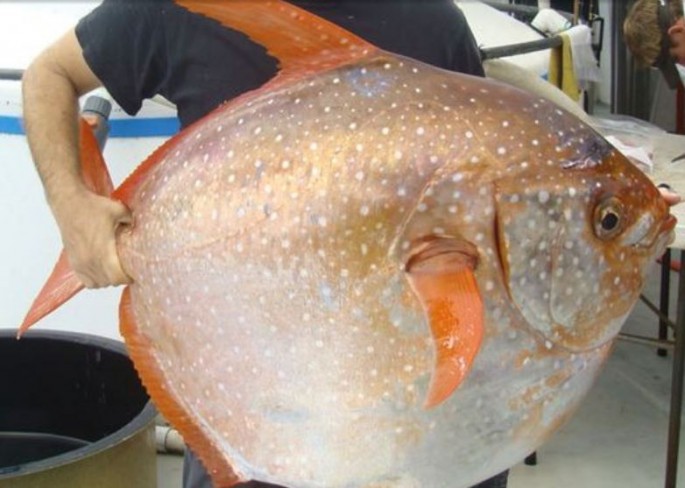It says something about the diversity of marine life it's only now scientists have confirmed the discovery of the first fully warm-blooded fish.
This unique fish that warms its blood like humans is called the opah (scientific name: Lampris guttatus). The overwhelming majority of fish are cold blooded, meaning their body temperatures match that of the waters they swim in.
Not the Opah, which is best described as a fast swimming flying saucer whose warm bloodedness defies conventional biology. It's a big fish that can reach two meters in length mostly and weigh some 270 kilograms.
Despite their size, they're surprisingly incredibly fast swimmers in their deep ocean environment. Deepwater fish are mostly slow-moving because of the cold waters they swim in.
On the other hand, the opah's warm-bloodedness results in faster swimming, better vision and quicker responses, giving it an edge in survival. Opahs are able to maintain their eyes and brain at 2°C warmer than their bodies, a phenomenon called cranial endothermy and one they share with some tunas.[
Researchers from the National Oceanic and Atmospheric Administration discovered the opah generates heat as they swim and spread this heat throughout their entire bodies using special blood vessels.
These "counter-current heat exchangers" in their gills minimize heat loss, allowing opahs to keep their bodies several degrees above the water temperature at a depth of 250 feet.
"There has never been anything like this seen in a fish's gills before," said biologist Nick Wegner, the lead author of the study about the opah, which is also called the moonfish and redfin ocean pan for apparent reasons.
The opah's "whole-body endothermy" makes it the first fully warm-blooded fish yet known.
"The opah appears to produce the majority of its heat by constantly flapping its pectoral fins which are used in continuous swimming," Wegner said as quoted by USA Today.
Almost nothing is known of opah biology and ecology, however. The fish are presumed to live out their entire lives in the open ocean at depths of 50 meters to 500 meters.
Opahs propel themselves by flapping their pectoral fins. This, together with their forked caudal fins and depressible median fins indicates they swim at constantly high speeds like tuna.
There are two opah species: L. guttatus, and the lesser-known Lampris immaculatus that reaches a total length of just 1.1 meters.



























